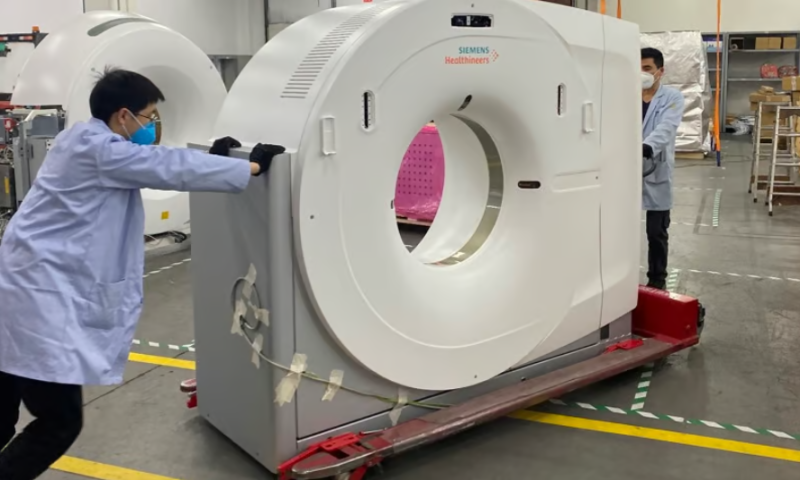Stumbles in radiation oncology from its Varian division weighed heavily on Siemens Healthineers’ latest quarterly earnings report, despite growth in other areas.
While a long-expected decline in COVID-19 antigen diagnostics also took a bite out of Siemens’ numbers, the company attributed the recent shrinkage in Varian’s profit margin to external factors such as inflation and ongoing kinks in the supply chain.
“We are experiencing a phase of temporary weakness,” CEO Bernd Montag said on a call with investors. “Several factors come together here, most importantly missing conversion this quarter from temporary logistics challenges.”
The Varian division did, to its credit, post a gain in the total sales of its cancer treatment hardware: an 840 million euro haul (about $920 million) equated to 6.7% growth compared to the same period last year—when accounting for changes in foreign currency exchange rates—though this was still below company targets.
At the same time Varian’s adjusted margins fell to 12.1%, down from 18.1%. The news saw Siemens Healthineers’ share price drop by about 7%, to around 49 euros on the German Xetra exchange.
The company had expected to log more revenues during its third quarter, which spanned April, May and June, but it was “held back by temporary challenges in outbound logistics” that it expects to solve in the fourth quarter. Cost increases for procurement and R&D also chipped away at the margin figure.
“Getting all the [linear accelerators] out of here—which is, in a way, a nice problem because of the high growth—is a challenge to achieve on exactly a given date, which is what happened here,” said Montag. “Twenty-ish LINACs didn’t make it to a complete delivery at the customer sites before the cut-off dates at the end of Q3.”
“In the end, it is recovering from the turbulences we had on the inbound side, and now we’re making up for it with this huge order backlog we have,” he added.
Siemens Healthineers as a whole posted 5.20 billion euros ($5.68 billion) in revenue, for a 3.6% gain over last year—or a 10.1% increase, when excluding the sales of its rapid COVID tests. However, earnings before interest and taxes, or EBIT, fell by 3%, with adjusted margins falling from 14.7% in the third quarter of 2022 to 14.2%.
Imaging was the strongest growth driver this quarter, with a 15.2% gain to 2.86 billion euros. Diagnostics, meanwhile, dropped 20.1% to just over 1 billion euros, as COVID-related sales evaporated this year after adding about 300 million euro to the balance sheet during the same quarter in 2022. Without them, the division would have logged 2% growth, the company said.
Siemens Healthineers’ confirmed its revenue guidance for the full year of 2023, with comparable revenue growth landing between -1% and 1%—or 6% to 8%, excluding rapid COVID tests.
The company also pointed toward the recent FDA clearance and launch of its Atellica CI diagnostic hardware—a more compact immunoassay and clinical chemistry analyzer aimed at clinical labs of varying size and throughput—which Montag described as the “missing puzzle piece” in its testing offerings.
Looking farther ahead, Montag commented on this year’s advancements in potential treatments for Alzheimer’s disease and the effects that could have down the line on Siemens Healthineers’ imaging business.
“This is one very visible example of what I often say, is that the world innovates for us,” Montag said. “So whenever there is a new therapy, Siemens Healthineers benefits… When it comes to new insights or new drugs, whether it’s an anti-fibrosis for Crohn’s disease or whether it is dealing with Alzheimer’s, as the leader in diagnostic imaging, we benefit.”

